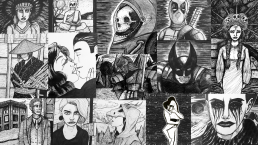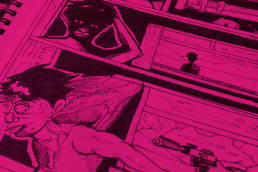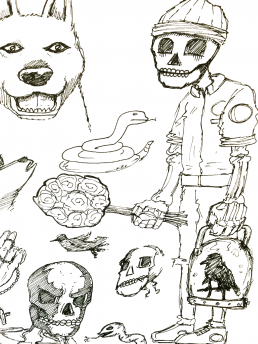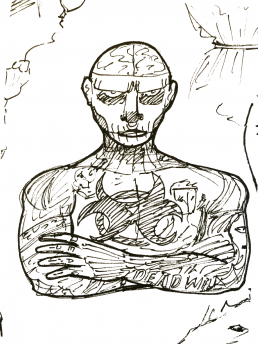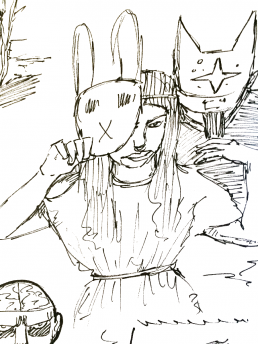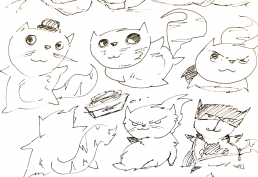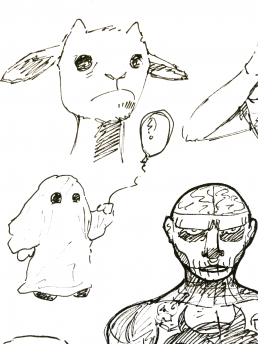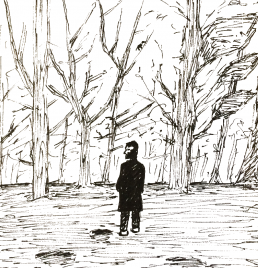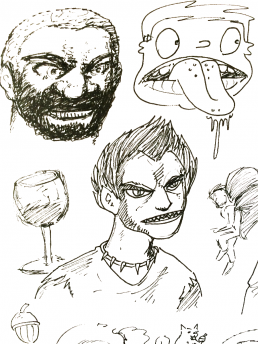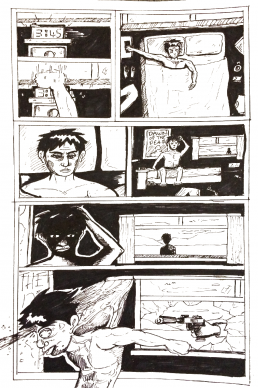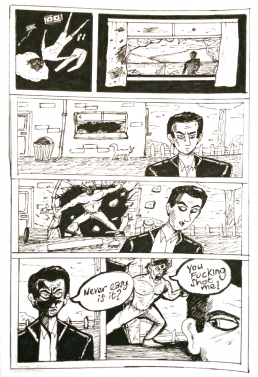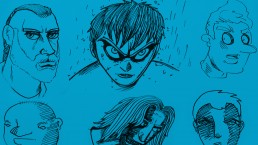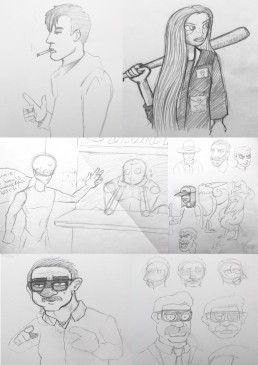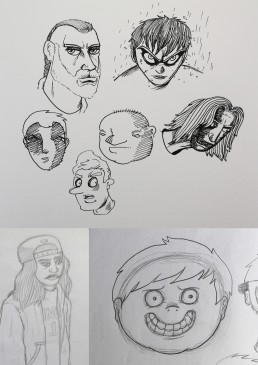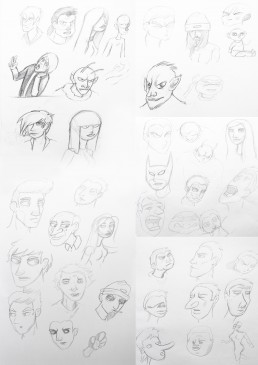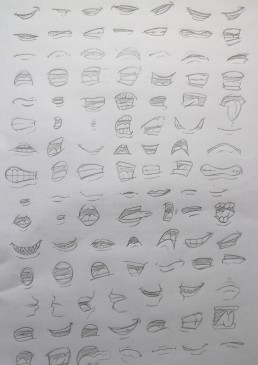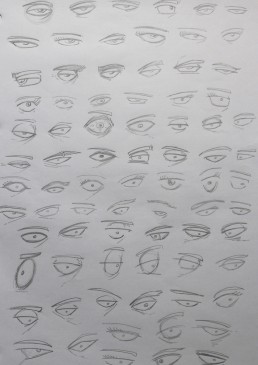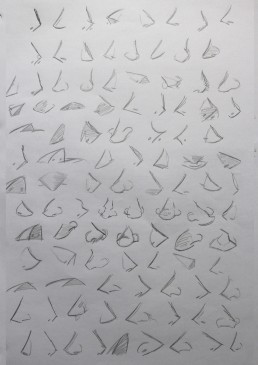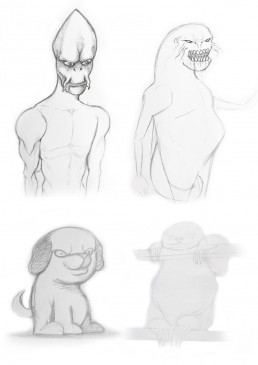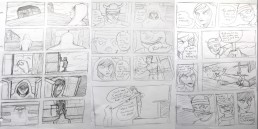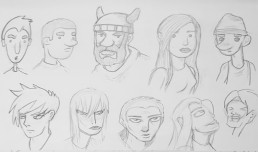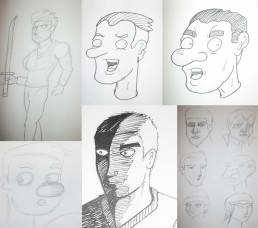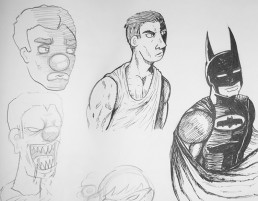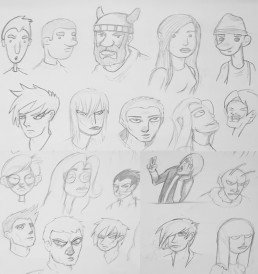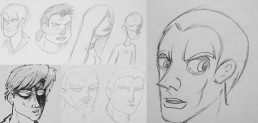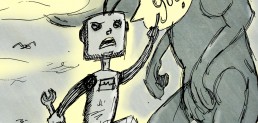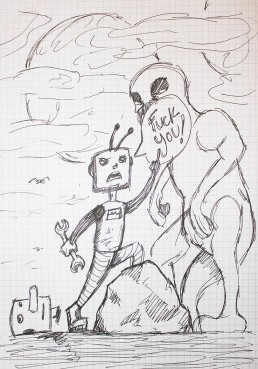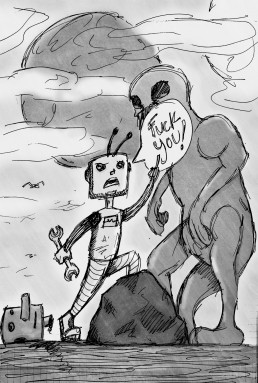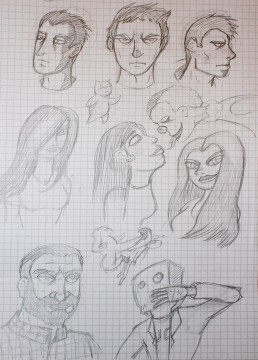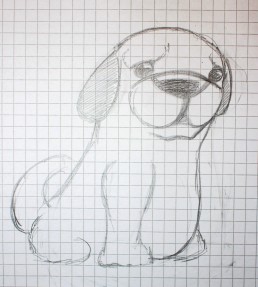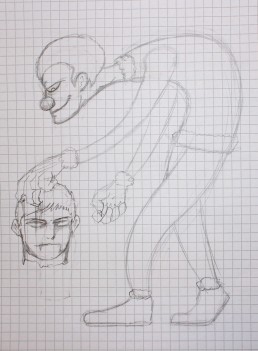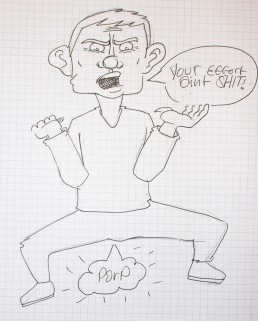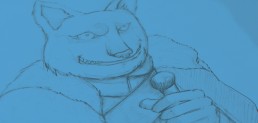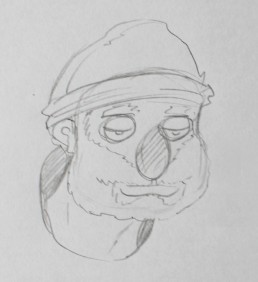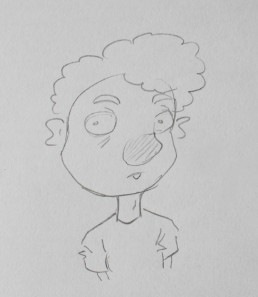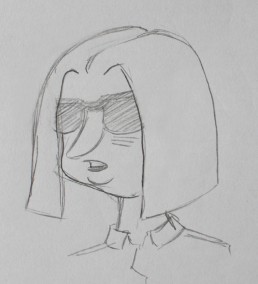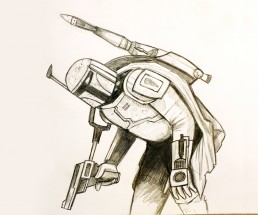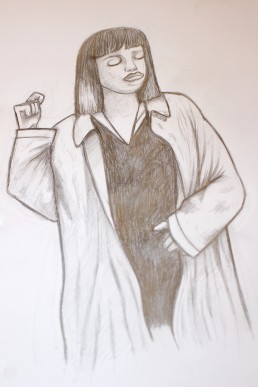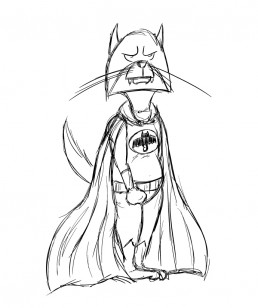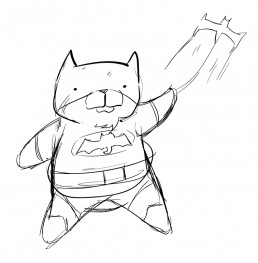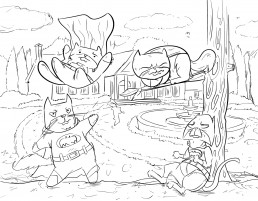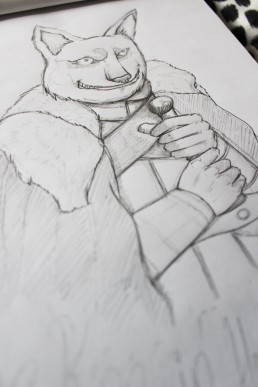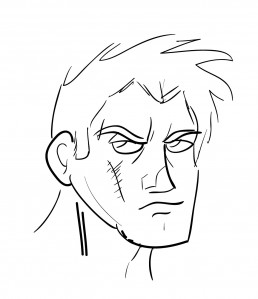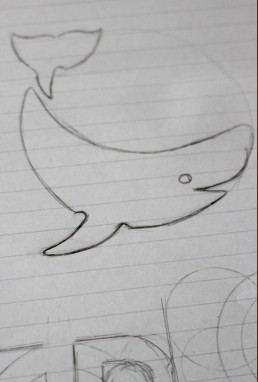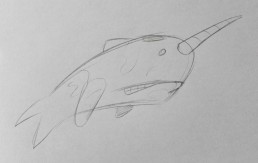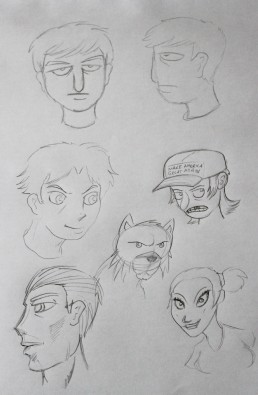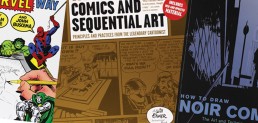Inktober 2018 completed!
What is Inktober?
Every October, artists all over the world take part in the ink-based drawing challenge Inktober! The aim is the create 31 ink drawings over 31 days in order to develop positive drawing habits and develop your artistic skills further. This year I took part in and completed Inktober 2018! It involved a lot of drawing and though occasionally I fell behind or struggled to keep up I really enjoyed creating art throughout October and it’s definitely inspired me to go forward into December and the new year wanting to create more!
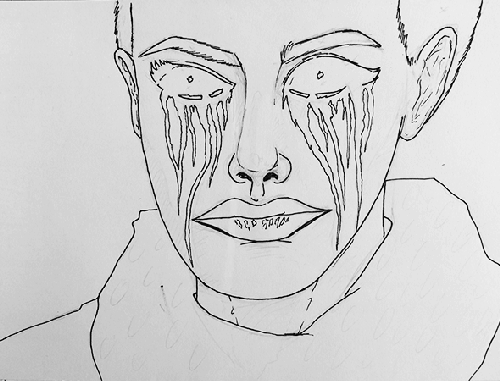
Tools Used
During my Inktober process, I used basic cheap mechanical pencils. When it came to the actual inking process I used a set of Graphik Line Marker Pens in varying sizes as well as a couple of Pilot Pure Liquid Ink Pens, I found the 0.5 gave a good consistent thin line but it’s nice having the thinner options with the Graphik Pen’s as well for more detail. I also purchased a basic drawing fountain pen with varying nib sizes and some Calligraphy Ink which I used in corporation with brushes for larger black sections as well as black Sharpie Marker pen as well as a Pentel GFKP Sumi Pen for some interesting line variation, backgrounds and filling the occasional black section. As for paper I mostly drew on Windsor & Newton A5 Cartridge Paper which had a nice high-quality texture and helped stop bleed through when inking.
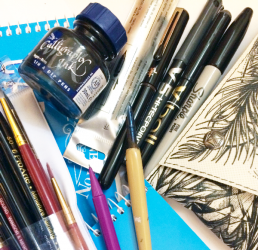
The Process
I’d always loved working in Ink but Inktober gave me a chance to use different tools and experiment with different techniques. Generally, my process would revolve around thinking of an interesting idea or concept, looking at a character reference or basing an illustration around a favorite character. At first I’d start with pencil lines sketching a rough outline then follow that with some basic plain line work before working up from there rendering the ink drawing to a point where it felt complete. Initially I started out using fine line pens and a sharpie, then expanded my tool set feature fountain pens, brushes and a japanese style sumi pen but I wanted to stick to traditional ink throughout the process no matter the technique used.
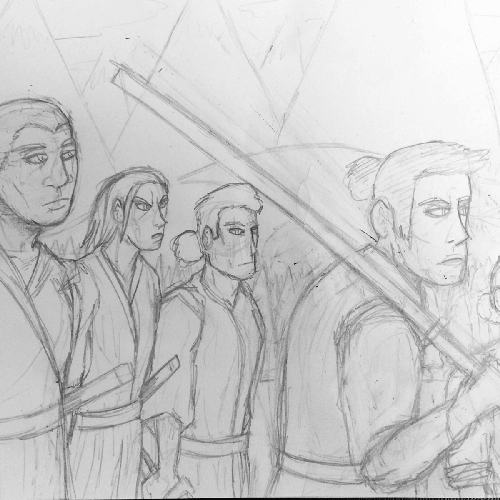
Conclusion
When I started Inktober I had no idea if I’d manage to finish it or if I’d end up enjoying it but I have to say along the way it helped re-ignite creativity and passion in me to keep drawing more, improving and being more ambitious and creative with my work. Though it took a lot of hours and a lot of drawing and sometimes I didn’t feel like drawing that day or life got in the way but I always got a sense of satisfaction when I did finish and post my art and it helped spur me on to do more and finish. Though some of my art didn’t turn out how I wanted it to and I made many mistakes I learned a ton along the way about the process of inking and different styles. I feel like through drawing over the full 31 days I really improved my artwork and instilled some good habits that I’ll carry forward into the new year. I really enjoyed taking part in Inktober 2018 and I’ll definitely be taking part again next year and hopefully between now and then I’ll keep inking and improving and get better before my next 31 days. I know one things for sure! I’ll be much more prepared next time!!
If you’d like to learn more about October or get a head start in preparing for next year you can check out there website Here. Also if you’d like to commission an ink drawing or any other illustration feel free to head over to the contact page and drop me a message so we can have a chat.
– Tom (Cartoon Mind)
September 2017: Art Dump
September 2017: Art Dump
What do we do with all those creative projects that don’t quite make the grade. The rough sketches, the outlines of ideas that never quite come to fruition. We dump them all in a blog post for people to enjoy 🙂 Here’s some of my rough work from this month.
10 must have illustration books
10 Must have illustration books
As the saying goes, good artists copy – great artists steal. Now I’m not suggesting you go out and steal anyone’s art or copy it for that matter. This is reference to the fact that if you were to borrow inspiration from multiple sources and let that inform your work and develop your skills then you’ll be much better off as an artist in the long run. The great thing about being a creative like an illustrator or a designer is there’s a plethora of work out there to draw from and plenty of amazing advice and practical tips to borrow from. below are my Top 10 must have illustration and art books.
1. How to draw comics the 'marvel' Way - By Stan Lee (1986)
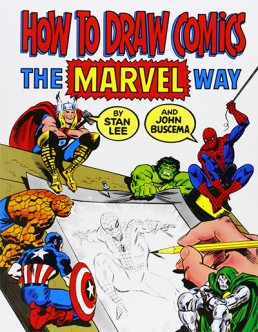
Like many budding artists as a child my first love was in animation and comic books. This book in particular holds a special place in my library as it was the first art-book I got as a child I remember being genuinely excited about. Still as useful today as it ever was how to draw comics the marvel way covers a huge range of topics from the tools of the trade, poses, drawing action scenes and rendering art to give it a 3 dimensions space and feel. This is a great starting point for any illustrator with a love of golden age comics who wants to learn the basics and develop there way to more advanced techniques. As well as learning the fundamentals of the marvel techniques for character design while owning a great piece of art and illustration history.
2. Comics and Sequential Art: Principles and Practices from the Legendary Cartoonist - By Will Eisner (1985)
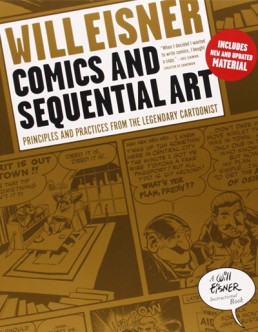
Described by a Pulitzer prize-winning author as a masterwork. This distillation of Will Eisner’s genius is a must have for any animator or illustrators library. Eisner was one of the first cartoonists to work in the American Comic industry and popularized the term graphic novel and the Eisner award is still equated as the comic industries equivalent of the Oscars. Suffice to say the guy knows his stuff and when it comes to sequential story telling, that is, telling a story in still images. The information in this book is invaluable!
3. The Animators Survival Kit - By Richard Williams (2001)
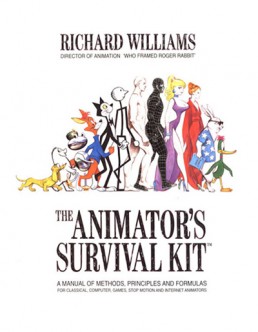
When I was looking to get into animation this is the book that popped up as a must own for any budding animator. If you want to add motion to your illustrations in the future than this is the best start you can give yourself in learning the fundamentals. Written by an academy award winning animation effects artist Richard Williams has built an outstanding reputation and with work on his CV like Toy story and to a lesser extent… Star Wars: The Phantom Menace – you can see why this is one of the most popular books on animation available.
4. How to Draw Noir Comics: The Art and Technique of visual storytelling - By Shawn Martinbrough (2007)
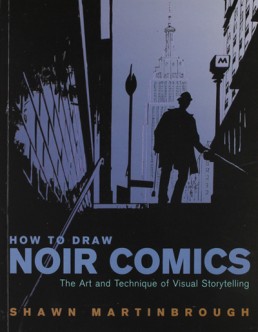
If like me you’re a fan of dark angles, shadowy, high contrast images, moody lighting, silhouettes and use of negative space combined with a dark and gritty tone driven by moral conflicts then this book is perfect for you. Martinborough’s has the ability to take art that should have a retro 1940’s vibe and make it contemporary and compelling as well as dramatic and urban. If you’re interested in developing your noir art style or your sequential storytelling in general this is a great read.
5. Giger ARh+ (Basic Art) - By H.R Giger (2001)
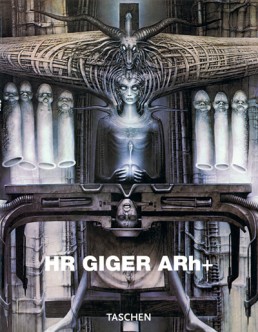
Though not a book on how to illustrate or create, this one’s a personal addition as Giger is one of my all time favorite artists. Over three decades he created some of the most fantastic industrialized surrealist art known to man. Combining machinery, sex and sadomasochism, he even found time to create the concept art for aliens. That’s right, without this man there would be no Xenomorph and a huge chunk of my childhood and yours would probably be missing. I highly recommend indulging in the mans dark and grimy art. It’s well worth a trip!
6. The Art of Pixar: 25th Anniversary - Amid Amidl (2011)
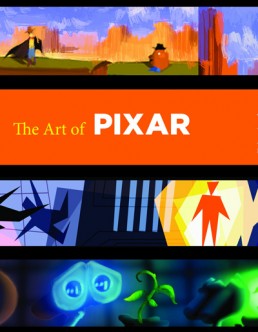
Another art book entry but there’s absolutely no question why I’d include this one on the list. Of all the animation studios today that are putting out feature length productions, pixar are for all intensive purposes ahead of the game. It takes a lot to over take disney but between Toystory and other massive franchises they’ve managed to do it. This is a great collection of the artwork they’ve produced over the last 25 years, a great gift, coffee table book or inspiring work for any budding illustrators collection.
7. Constructive Anatomy - By George B Bridgman (2000)
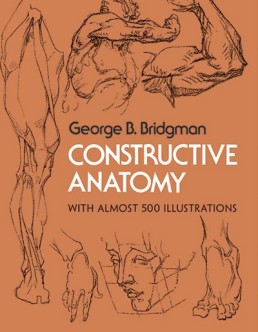
Though not the most exciting title on this list it is extremely important to learn anatomy when it comes to drawing. If your proportions are all out of whack it can be a stylistic choice but as they say, you need to learn the rules before you break them. Anyone serious about their artistry and improving will at some point most likely want to draw real human people. In order to do that effectively they need to know the human anatomy as well as possible – this is a great book for that purpose.
8. Drawing cutting edge anatomy - By Christopher Hart (2004)
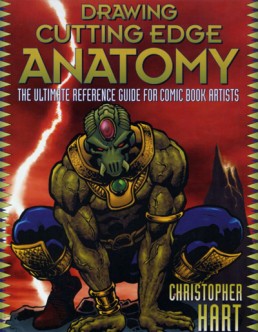
Now that we’ve covered the realistic side of human anatomy and art it’s time to have some fun and break the rules. This is a fantastic comprehensive guide to comic book anatomy. Taking you from the basics right down to individual body parts and muscle groups – hart covers all the extremes when it comes to playing with proportions.
9. The art of drawing Manga - By Ben Krefta (2009)
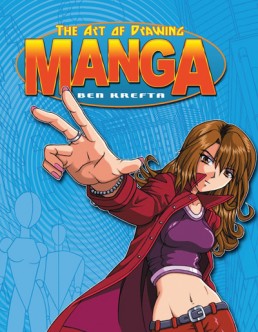
Though there are a huge range of how to draw Manga books on the market this is one I can personally vouch for. A great comprehensive guide to the fundamentals of the most popular art form in Japan. With anime constantly growing in popularity with western audiences and being accepted in the mainstream thanks to Studio Ghibli and Netflix bringing shows like Attack on Titan and Death note to the attention of mass audiences, it’s a great time to get involved in the world of Manga art. This is a great place to start developing elements of what makes up the ‘anime’ or ‘manga’ art style that has become so popular.
10. How to draw cartoons and caricatures (2013)
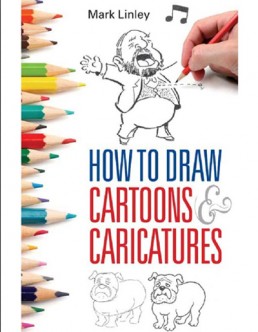
This is a fun book and one that proves that everyone car draw once they grasp the basics rule of art, that is – everything is made up of simple shapes. It is how we combine and exhilarate those shapes that create style and interesting substance. If you’re wanting to start drawing fun cartoons of your pets or creative funny sketches of friends or colleagues this book will tell you how to draw and exhilarate features while making things fun in the process.
I hope you enjoyed this list, obviously these are just some personal favorites and recommendations for getting started and improving as an illustrator. I hope you enjoyed it but if you disagree with any of the entries or have some books you’d like to recommend yourself, feel free to leave a comment or find me on social messenger and we can have a bloody lovely chat.
– Tom
